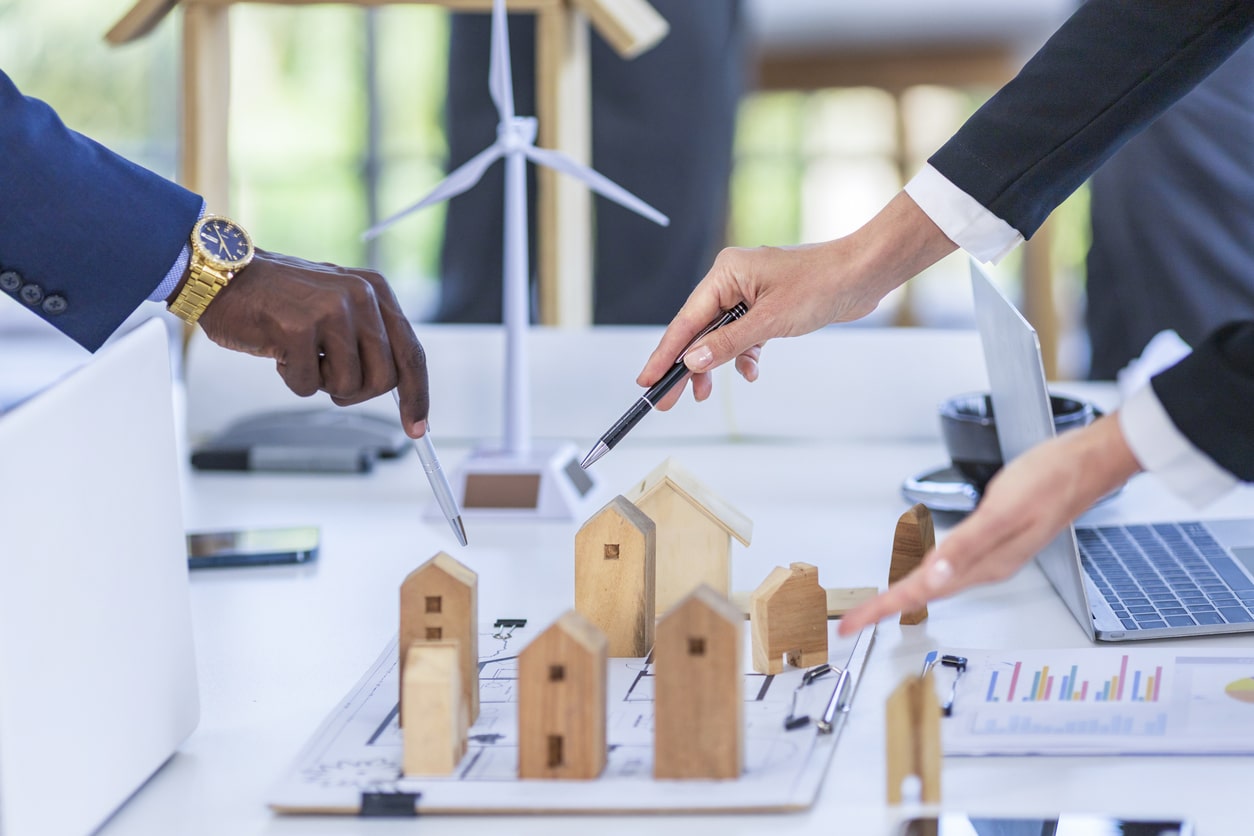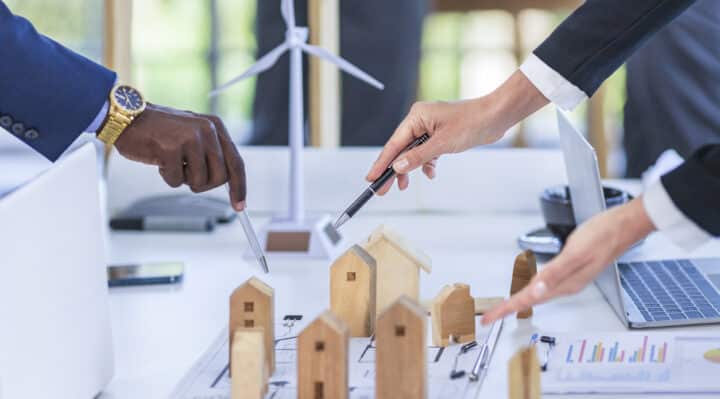
What Makes a Property Sustainable?

The construction industry is one of the largest consumers of natural resources and a huge polluter, contributing to the climate crisis. But it’s also an industry we can’t do without, which is why sustainable construction is growing in popularity. From the equipment used to build to technology and energy-efficient systems, there are several ways you can make a property sustainable and many reasons for doing so.
Why Is Sustainable Construction Important?
Sustainable construction reduces the impact of the industry on the environment. This can include anything from using renewable or recyclable materials to reducing energy consumption of the final structure, minimizing on-site waste and protecting surrounding habitats and ecosystems during and after construction. Heavy plants used in the construction sector lean heavily on fossil fuels, but the industry is also responsible for the embodied energy in a building and its energy requirements when it’s in use.
The construction sector accounts for 36% of global CO2 emissions, but with the climate crisis well and truly upon us, businesses need to make significant changes to their operations and consider the lasting impact a structure will have on the environment. Not only that, but the manufacture and shipping of materials has a vast impact on carbon emissions, so choosing sustainable construction practices can help to reduce this and create an eco-friendlier process.
How Can a Property Be Made More Sustainable?
Make Use of Brownfield Sites
Brownfield sites involve land which has been developed previously, often with derelict buildings or contaminated grounds, but which can potentially be redeveloped. They offer sustainability benefits because you’re transforming unused spaces into practical structures and avoiding disrupting other untouched habitats, which preserves them.
Future-proofed Properties
When it comes to investment, property shouldn’t lose its value and, when it comes to sustainability, it’s vital to consider how a property will age. You don’t want to invest time, money or resources into a building only to have to make changes every few years to keep it functioning, so future-proofing is the answer. From the energy requirements of a building, to the size of the property and how it meets the needs of the occupants, sustainable construction needs to be fit for purpose not only now but for future generations.
Minimized Pollution from Construction Processes
Pollution comes from various sources in this sector, from harmful ground gasses which pose a threat to inhabitants to those which leach into the water supply, harming residents and wildlife. Gasses, such as radon, can enter buildings through cracks in foundations or in instances where there’s a lack of gas protection membrane, which then contributes to pollution in the air. Construction professionals need to find ways to reduce this pollution for a greener property.
Minimal Water and Energy Consumption
Reducing water and energy consumption in construction is important for both environmental and economic reasons. The building needs to be energy-efficient and water-smart from the beginning, using environmentally-friendly materials. This can be done by optimizing HVAC systems, using water-efficient fixtures, harvesting rainwater, using renewable energy sources and optimizing lighting. By implementing these strategies, construction projects can significantly reduce water and energy consumption, benefiting both the environment and their bottom line.
Meeting Sustainability Standards
Sustainability certifications ensure complete transparency over the environmental benefits of a property, and confirms the developer or owners have considered the overall impact of the building. There are several possible certifications, depending on the motivations for achieving them, but they act as a seal of approval for the green credentials of the home or commercial building, whether it’s LEED, ISO 14001 or B Corp.
Sustainably Retrofitting a Property
Retrofitting a property to make it more sustainable and eco-friendly is an effective way to reduce energy consumption and carbon emissions, while also making the property more comfortable for occupants.
Start with the Fabric First
There’s no benefit in installing the latest energy efficiency gadgets and double-glazed windows, if the fabric of the property isn’t secure. This means, in order to maximize the efficiency of a building, you need to make changes to the foundations first with insulation, draught proofing and breathability.
Old homes, for example, won’t have been built with vapor barriers and damp proofing, so this needs to be added in to protect the building for longevity. Make sure you have the necessary permissions to make these changes to your property, whether that’s seeking the go-ahead from your local authority or working with a surveyor to ensure your neighbors have approved changes to boundary walls, especially if you have a party wall.
Take a Holistic Approach
When it comes to retrofitting a building, don’t think about sustainability measures in isolation. These work best when done in tandem, so take a holistic approach to your eco upgrades in order to maximize the impact of each one. Similarly, there’s a logical order to these changes, because installing one measure might make implementing another harder later on.
For example, in terms of external wall insulation and replacing windows, if you have plans to do both then it makes sense to change the windows first. Updating the wall insulation first means there could be a risk of damage when the old windows are removed to be replaced with double glazed alternatives. Likewise, if you put in a new heating system and want to insulate the property, make sure the insulation is completed first.
Make Changes to Heating and Lighting
Heating and lighting are significant contributors to the carbon footprint of a property, so when you’re retrofitting a property, this should be an important aspect of your amendments. Renewable heat technology may include biomass boilers, heat pumps or solar powered heating, but they all offer benefits for buildings in terms of reducing carbon emissions and reliance on fossil fuels.
Retrofitting a property with a renewable heating system can be a significant investment, but it can also provide significant long-term savings on energy bills and reduce the property’s overall environmental impact. Renewable heating systems are considerably more efficient than a gas boiler, operating most efficiently at lower temperatures. When retrofitting a property with a renewable heating system, it is important to first conduct an energy audit to determine the appropriate system for the property’s specific needs. This includes evaluating factors such as the size of the property, the level of insulation and the local climate.
Install Low-flow Fixtures and Fittings
Low-flow fixtures are designed to reduce water usage without sacrificing performance. They can be installed in faucets, toilets and showerheads, and can significantly reduce water bills and overall water usage of the property. Low-flow faucets and showerheads typically use less than 2.5 gallons of water per minute, compared to standard fixtures that can use up to 5 gallons per minute.
Installing low-flow fixtures is a simple and cost-effective way to reduce the water usage of a building and save money on water bills. In addition, reducing water usage can help conserve this valuable resource and reduce the overall environmental impact of your property. When selecting low-flow fixtures, look for WaterSense certified products. WaterSense is a program sponsored by the Environmental Protection Agency (EPA) wherein products are identified as being both water-efficient and performing well.
If you want to achieve a more sustainable lifestyle, or you’re a construction professional looking to make greener swaps, consider the points above for a holistic approach to construction and property management.



Post a comment